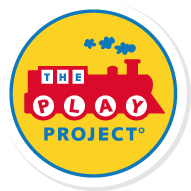 By: Joanna Evans
By: Joanna Evans
Early Intervention Specialist-Delaware County Board of Developmental Disabilities
Certified P.L.A.Y. Project Home Consultant
These days we all live in an instant gratification society. Waiting for anything can always be a challenge. Waiting in line at the grocery store, waiting for your tax refund check, the list goes on. Is waiting ever a good thing? When it comes to children with Autism Spectrum Disorders or kids who have a speech and language delay, waiting is often one of the best things we can do.
Parents, caregivers, therapists, and home consultants all want to help a child learn to communicate as quickly and efficiently as possible. It is difficult to see children struggle with the frustration of simply not being able to communicate their most basic wants and needs. Ask many parents of children with ASD just starting out on the treatment journey and they will most likely tell you their greatest desire: “I just want my child to talk.” And with this desperate plea, the ball begins to roll.
The basic instinct, even for professionals, is often to try and teach instead of simply having fun interacting with the child. We want the child to speak and communicate just as desperately as the families do. However, more often than not, the best way to find out what a child can do is the opposite of what we might think; Do Nothing. In a recent P.L.A.Y. Project training webinar, Dr. Rick Solomon said: “If you really want to see where the child is at, do nothing…Waiting is a perfect way to ‘honor the child.’” This allows us to step back and ask ourselves: “Where is the child’s attention? What is his or her intention?” Dr. Solomon calls this “Putting on your Zen Head.” At that moment, we have no ideas or preconceived notions of our own…we are simply allowing the child to be where he or she is in the moment. To simply “be with” the child…no teaching, comments, or directives… this is often the best way to interact and almost always leads to some profound communicative exchanges.
Any time you wait, you risk “losing” the child–and that is OK! Give yourself permission to take risks, otherwise you may not know how far the child is able to take an interaction. Open a circle of communication, and then wait…up to 10 seconds! This can often feel like an eternity, but for a child just learning to communicate, he or she needs time to process the request, formulate a response, then the brain must send all the proper signals to the muscles in the mouth and vocal cords to make a sound–it is a process that is not always automatic in the very beginning. Think of it as a way to pose a challenge to the child. You are telling him or her: “I have confidence in you and your ability, and I will be patient while you show me all the amazing things you can accomplish.” Communication is a dance–often a very subtle dance, in which both partners, the child and the caregiver or professional, are in perfect sync. The adult does not always have to take the lead. Allow the child to lead and you may be surprised how far they take you.
It is crucial that professionals share their intention regarding their waiting strategies with the parents and caregivers before, during, and after P.L.A.Y. sessions. At times, as P.L.A.Y. Project consultants or therapists, we feel that we are under pressure to make something happen when we are working with a child and their family. The art of doing nothing and simply waiting is actually very purposeful and can be a powerful tool. Explaining this to the families as it happens in the moment helps everyone relax and enjoy each and every interaction and watch the magic unfold.
